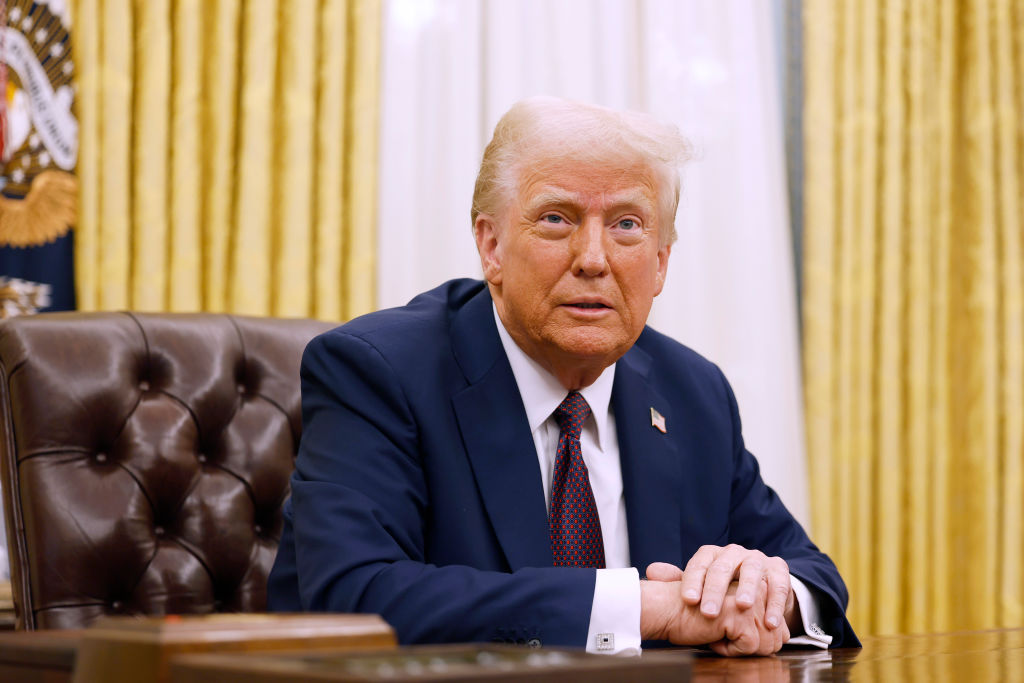Tech Heavy Hitters Join Forces to Form AI Alliance: The Kiplinger Letter
The AI Alliance is an international community of leading technology developers and researchers to cooperate on AI standards, safety and security.

To help you understand what's happening in the technology sector and and what we expect to happen in the future, our highly experienced Kiplinger Letter team will keep you abreast of the latest developments and forecasts (Get a free issue of The Kiplinger Letter or subscribe). You'll get all the latest news first by subscribing, but we will publish many (but not all) of the forecasts a few days afterward online. Here’s the latest…
A group of tech heavy hitters is joining forces to boost artificial intelligence with one key goal: a coordinated effort to enhance safety amid the rising fears of AI risk, including misinformation, cyber threats, discrimination and data theft.
The recently launched AI Alliance, started by IBM and Facebook owner Meta, brings together government, academia and industry to cooperate on standards, safety, and security. Other members of the new global group include AMD, Intel, Dell and Sony, plus federal agencies such as NASA and universities such as Yale.
Expect promising work from the group as it promotes open tech standards, which make it easier to persuade software developers to build new apps and tools. The group will also create a catalog of vetted security, safety and trust tools with one unstated mission: Shaping government regulation to avoid strict laws. The group will also host events showing how members use AI responsibly and safely.

Sign up for Kiplinger’s Free E-Newsletters
Profit and prosper with the best of expert advice on investing, taxes, retirement, personal finance and more - straight to your e-mail.
Profit and prosper with the best of expert advice - straight to your e-mail.
Tech companies lobbying to avoid strict AI regulations didn’t work in Europe. The European Union is moving ahead with its AI Act, which is set to take effect in 2025. The regulations will involve high levels of transparency and reporting, a headache for many companies.
They’ll also ban a slew of AI applications, such as biometrics, that help categorize people by sensitive characteristics (religion, politics, race, etc.) and emotion recognition in the workplace or at school. Some bans are very broad, such as barring “AI systems that manipulate human behavior to circumvent their free will.” It will take much more commentary from regulators to understand how the rules will work in practice as hefty fines are coming for companies found in violation.
The U.S. and other countries will be watching closely. Any legislation from Congress will likely be much less strict than the EU’s, giving the U.S. an ongoing edge.
Alphabet’s new product exemplifies today’s AI arms race. The firm’s twist: Its new Gemini model can “understand” a range of inputs from text, computer code, audio, image and video, so the AI chatbot can answer questions, interpret data and more. Google has three versions, including an energy-saving one made for mobile devices.
Some notable AI firms and tools include Microsoft-backed OpenAI with its ChatGPT, Stability AI and its image creator Stable Diffusion, Cohere, a business-focused AI firm, Hugging Face, an online hub for start-ups to find AI models and Anthropic’s Claude, a popular AI assistant. Plus, big tech companies such as Amazon, Meta and Apple.
Meanwhile, how is emerging AI going to help manufacturers? 40% of manufacturing executives in a recent survey said to start by analyzing data to help evaluate and organize plant floors. That’s especially true for plants with web-connected machinery. For example, Nvidia’s Omniverse software can use AI to model logistics and robots at a plant before production starts. Virtual reality can also help train employees, and executives think AI will help with predictive maintenance, process improvements, and quality control.
However, AI tech can have large up-front costs, a looming challenge for small manufacturers, and the testing phase is lengthy. Small manufacturers may lack enough data to train the AI system well enough. However, the software’s costs will continue to fall, and more digitized data will become available, making the tech more accessible.
This forecast first appeared in The Kiplinger Letter, which has been running since 1923 and is a collection of concise weekly forecasts on business and economic trends, as well as what to expect from Washington, to help you understand what’s coming up to make the most of your investments and your money. Subscribe to The Kiplinger Letter.
Related Content
Get Kiplinger Today newsletter — free
Profit and prosper with the best of Kiplinger's advice on investing, taxes, retirement, personal finance and much more. Delivered daily. Enter your email in the box and click Sign Me Up.

John Miley is a Senior Associate Editor at The Kiplinger Letter. He mainly covers technology, telecom and education, but will jump on other important business topics as needed. In his role, he provides timely forecasts about emerging technologies, business trends and government regulations. He also edits stories for the weekly publication and has written and edited e-mail newsletters.
He joined Kiplinger in August 2010 as a reporter for Kiplinger's Personal Finance magazine, where he wrote stories, fact-checked articles and researched investing data. After two years at the magazine, he moved to the Letter, where he has been for the last decade. He holds a BA from Bates College and a master’s degree in magazine journalism from Northwestern University, where he specialized in business reporting. An avid runner and a former decathlete, he has written about fitness and competed in triathlons.
-
 What 401(k) Savers Near Retirement Can Do Amid Market Volatility
What 401(k) Savers Near Retirement Can Do Amid Market VolatilityWhether retirement is years away, a year or two out, or in the rearview mirror, here's how to handle uncertainty in your 401(k).
By Donna Fuscaldo Published
-
 The New Space Age Takes Off
The New Space Age Takes OffThe Kiplinger Letter From fast broadband to SOS texting, space has never been more embedded in peoples’ lives. The future is even more exciting for rockets, satellites and emerging space tech.
By John Miley Published
-
 The New Space Age Takes Off
The New Space Age Takes OffThe Kiplinger Letter From fast broadband to SOS texting, space has never been more embedded in peoples’ lives. The future is even more exciting for rockets, satellites and emerging space tech.
By John Miley Published
-
 Rising AI Demand Stokes Undersea Investments
Rising AI Demand Stokes Undersea InvestmentsThe Kiplinger Letter As demand soars for AI, there’s a need to transport huge amounts of data across oceans. Tech giants have big plans for new submarine cables, including the longest ever.
By John Miley Published
-
 What DOGE is Doing Now
What DOGE is Doing NowThe Kiplinger Letter As Musk's DOGE pursues its ambitious agenda, uncertainty and legal challenges are mounting — causing frustration for Trump.
By Matthew Housiaux Published
-
 A Move Away From Free Trade
A Move Away From Free TradeThe Letter President Trump says long-term gain will be worth short-term pain, but the pain could be significant this year.
By David Payne Published
-
 The Explosion of New AI Tools
The Explosion of New AI ToolsThe Kiplinger Letter Workers and consumers soon won’t be able to escape generative AI. Does that mean societal disruption and productivity gains are right around the corner?
By John Miley Published
-
 Trump’s Whirlwind Month of Crypto Moves
Trump’s Whirlwind Month of Crypto MovesThe Kiplinger Letter The Trump administration wants to strengthen U.S. leadership in the cryptocurrency industry by providing regulatory clarity.
By Rodrigo Sermeño Published
-
 Excitement Over AI Propels IT Spending
Excitement Over AI Propels IT SpendingThe Kiplinger Letter IT sales set to surge in 2025 as businesses rush to adopt generative AI.
By John Miley Published
-
 Donald Trump Tests His Limits
Donald Trump Tests His LimitsThe Kiplinger Letter President Encounters Legal Obstacles in Pursuit of Ambitious Agenda.
By Matthew Housiaux Published